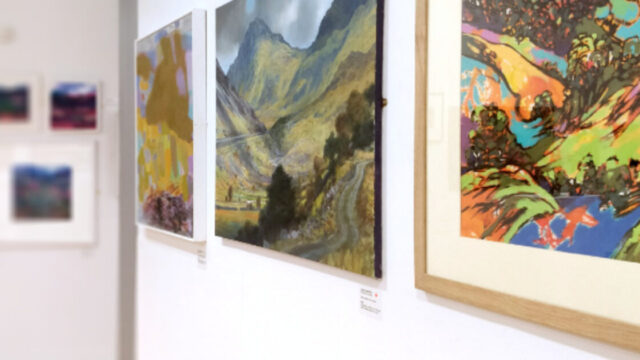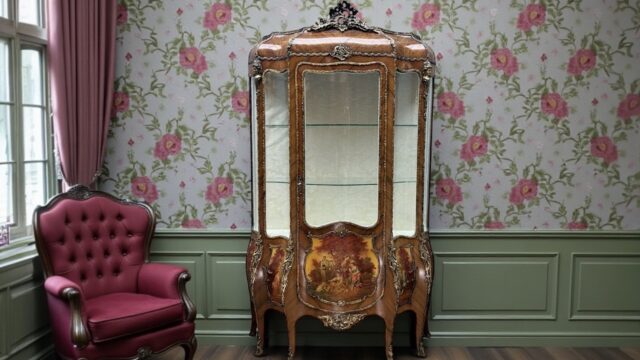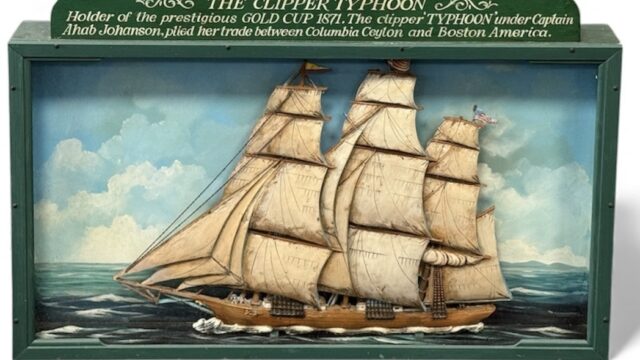Claudia Williams
Art and Life
When I first met Claudia in the summer of 1994, soon after I met Ben, I was immediately struck by her beauty and bold sense of style. As I got to know her that summer in Brittany, I realised that she had many lives within her. She was theatrical in her gestures, decisive in her views and always ready for a trip to the beach with the grandchildren. There she would find a good spot to sit, and then out would come the sketchbook. Art for Claudia, I soon realised, was not simply a pastime but life itself.

We soon discovered that we both loved theatre, so together we put on a play every summer at Rochefort-en-Terre – in the big ground floor room, with a curtain strung from a beam, or in their rose-filled garden down next to the lavoir at the bottom of the village. One year, as a terrifying Baba Yaga Bony Legs, she made herself hoarse for weeks afterwards. But it was worth it! She created papier-mâché masks, ran up costumes and designed sets. Her eye was superb, her invention and energy seemingly boundless.
Recently, I have been reading Claudia’s diaries from 1948-1951 (from her final two years at her school, Eothen, in Surrey - with holidays back with her parents in North Wales - to the end of her first year at Chelsea School of Art). She kept every programme, made sketches, listed books she had read and commented in detail on exhibitions. What struck me at once was how already here is Claudia’s voice and character - a seeker for new experiences, with an open delight in music, theatre and, above all, art.
Here she is, recording a dance with boys from the neighbouring school at the end of the Spring term of 1949. True to her later relationship with Gwilym, she likes a boy who stands out from the others and makes her laugh. This is her brilliant sketch of Spooner:
‘I don’t think I have ever met a boy quite so funny as Spooner. He really was a scream…He did the slow waltz to every single dance but kept perfect time. He came in a dirty old sports coat with stains on it and kept stuffing doughnuts in his pockets.’
In some ways, Claudia sounds like a typical schoolgirl of her age and social background. A half term trip up to London includes delight at buying ‘a lovely evening dress’ and she gives a detailed account of every course of a ‘lovely lunch’ and later tea ‘toasted scone, chocolate eclairs, cream cakes [and] ice-cream’. But her artist’s eye is individual, sharp and sophisticated. She notices the ‘lights [that] shone down and reflected in the water, coming over London Bridge in the train. Behind the buildings some cranes and peculiar machines stood out against the sky’. Next to this is a little sketch with annotations ‘the sky was a light grey blue colour. The buildings looked very dark against it and the cranes were dark too.’ The comments on what she sees at first hand, as opposed to what she buys, reads, listens to and eats, is minutely observed and unconventional. Everything else is ‘lovely’, and it is left at that. The ink sketch, by contrast, is remarkable – swiftly executed as an aide memoir – a painting in the making.
In the run-up to her success in the National Exhibition of Children’s Art Exhibition in May 1949, she and her friend Shirley Blomfield (known as Blom) sound like professional artists already. The judges shortlisted them both (earning the whole school a half holiday) and asked them to send up ten more of their paintings within a week - ‘Have just had a hectic weekend painting and eating our meals up in the Studio’. Her day at the BBC television studio at Alexandra Palace followed – ‘Jennifer asked us several questions […] most of what I told her was untrue’. There is something so delightful about this excited schoolgirl – everything is observed – the hot television lights, ravioli at the Italian restaurant in Chelsea (a new experience for her), Battersea Power Station across the river, the factory chimneys – all a source of fascination. The pattern of her adult life as an artist is mapped out in this frantic weekend - the thrill of working hard to a deadline, and the rewards and pleasure this brings.
Running through her diaries is a dislike of sentimentality in art, and the paintings she chooses to send up to the judges bear out her interest in the ordinary. The titles of these ten paintings include – Woman washing up, Men sitting up mugs of beer, Hiker in pub, Rugger players, Girls in blue, Witches Sabbath, Fishermen, and the winning painting, Milking. She is already planning future work at the same time – swing boats at a fair, oxen – white with great horns, spinning tops, woman kneeling in pew, spiral staircase with wrought iron, nice pattern made by Nissen huts, painting with barbed wire, reading newspapers, playing golf, cleaning shoes, café umbrella. Decades later she declared her chief subject as bathers on the beach, but the roots of her art are already here at the age of sixteen – a pleasure in capturing people in movement doing things.



I was fortunate to have Claudia as my mother-in-law. Her engagement with life, family and art remained undiminished well into her eighties. Even as her later years brought vagueness and confusion, she would always liven up when I pulled out a book of paintings or we looked through one of her travel diaries. I can still recall her shrieks of laughter as we played picture consequences with the children, or her delight in walking along the beach at Tenby to collect shells and look at families getting changed. After her funeral, we swam in the sea – our generation together with her grandchildren and great grandchildren - Claudia was with us in spirit. Her 1949 diary ends with the grand opening of the exhibition in September at the Royal Institute Galleries in Piccadilly. After a description of the day and an all-night train journey back to North Wales, she writes ‘So ends one of the most exciting times I have ever had’. It was the start of a lifetime of painting and a fierce delight in life.
Cathy O’Neill
Daughter-in-law
View Journey: The Family Collection of Gwilym Prichard & Claudia Williams here.




